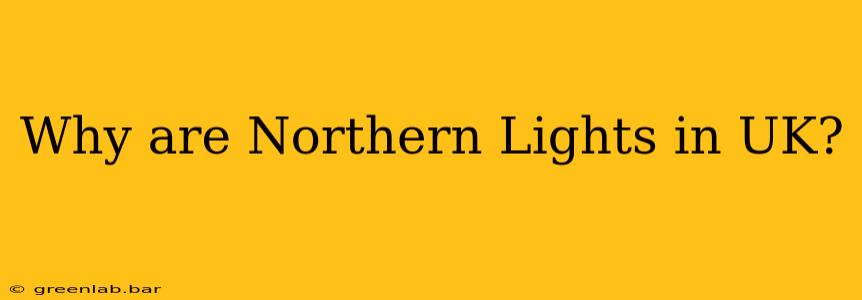The UK, while not located within the Arctic Circle's prime aurora viewing zone, occasionally experiences the breathtaking spectacle of the Northern Lights, also known as the Aurora Borealis. This captivating phenomenon, caused by charged particles from the sun interacting with the Earth's atmosphere, is a rare but exciting event for British skywatchers. But why does it happen here, and what conditions need to align for this celestial display to be visible?
Understanding the Aurora Borealis
The Northern Lights are the result of solar flares ejecting massive clouds of charged particles—the solar wind—towards Earth. These particles travel at immense speeds and interact with the Earth's magnetosphere, a protective magnetic field that surrounds our planet. This interaction funnels the charged particles towards the poles, where they collide with atoms and molecules in the upper atmosphere (ionosphere). This collision excites these atoms and molecules, causing them to emit light—the beautiful, dancing lights of the aurora.
Why the UK Sees the Northern Lights (Sometimes)
The further north you are, the higher your chances of seeing the aurora. However, powerful solar storms can cause the aurora oval—the ring-shaped area around the magnetic poles where auroras are most frequent—to expand significantly southward. This expansion allows the aurora to become visible at lower latitudes, including parts of the UK, particularly Scotland, northern England, and even sometimes further south.
Key Factors Contributing to UK Aurora Sightings:
-
Solar Storm Intensity: The intensity of the solar storm is crucial. A powerful geomagnetic storm, categorized as G3 or G4 on the geomagnetic storm scale (with G5 being the most extreme), is often necessary to push the aurora far enough south to be seen from the UK.
-
Clear Dark Skies: Light pollution from cities drastically reduces visibility. The best chance of witnessing the aurora is in areas with minimal light pollution, away from urban centers. Clear skies are essential; cloud cover will completely obscure the aurora.
-
Time of Year: Winter months (September to March) offer the longest hours of darkness, increasing the likelihood of viewing an aurora if a strong enough geomagnetic storm occurs.
-
Geomagnetic Latitude: Scotland, being further north, has a higher chance of seeing the Northern Lights than southern England. However, exceptionally strong storms can make them visible much further south.
How to Increase Your Chances of Seeing the Northern Lights in the UK
While you can't control solar activity, you can optimize your chances of witnessing this incredible natural display:
-
Check Aurora Forecasts: Several websites and apps provide real-time aurora forecasts, predicting the likelihood and intensity of auroral activity. These forecasts combine solar wind data with geomagnetic indices to estimate the aurora's visibility at different locations.
-
Head North: Your chances increase significantly the further north you go in the UK. Scotland's northern and western coasts offer some of the best locations.
-
Find Dark Sky Locations: Escape light pollution. Rural areas, national parks, and coastal regions away from major cities provide the darkest skies for optimal viewing.
-
Be Patient and Persistent: Aurora sightings are unpredictable, even with favourable forecasts. Be prepared to spend time outdoors, waiting for the lights to appear.
Seeing the Northern Lights in the UK is a rare and unforgettable experience. While not guaranteed, by understanding the contributing factors and following these tips, you can significantly increase your chances of witnessing this magical spectacle.

